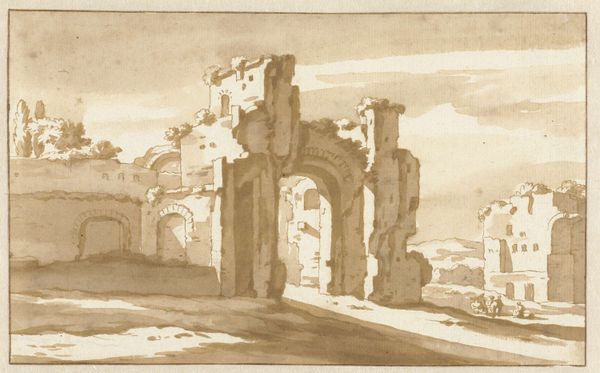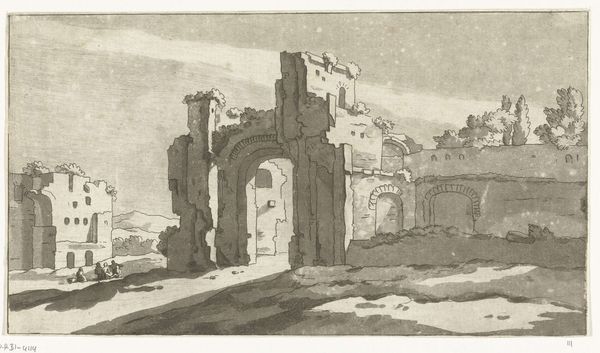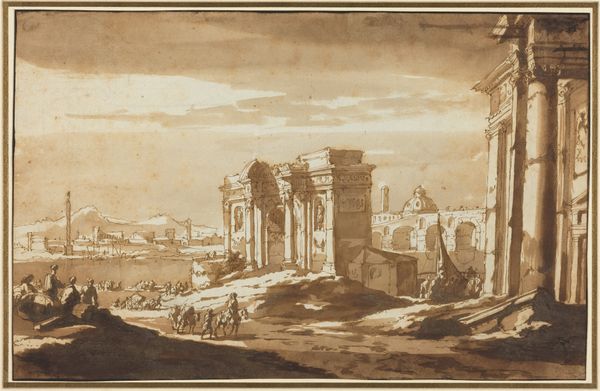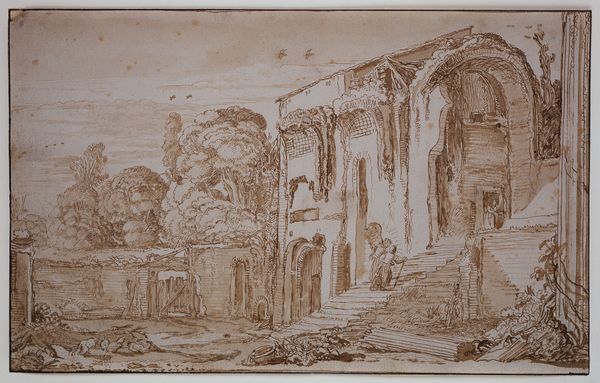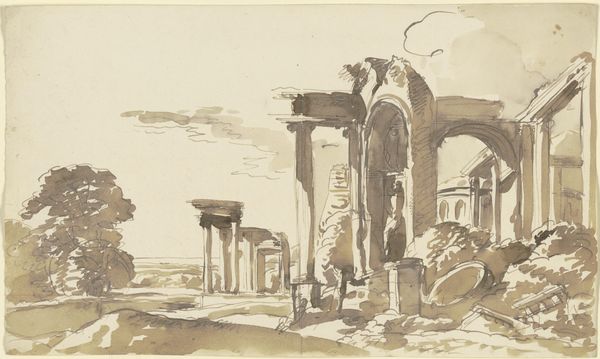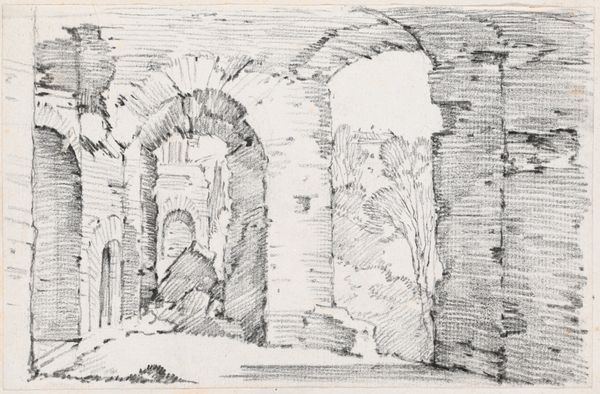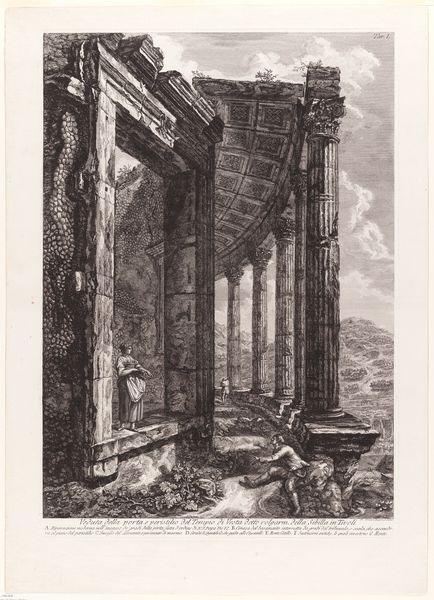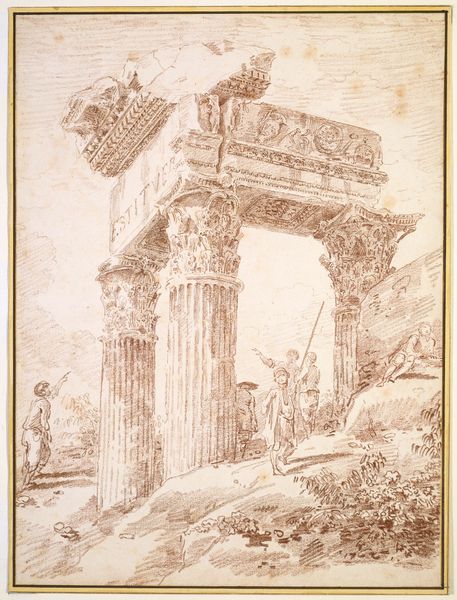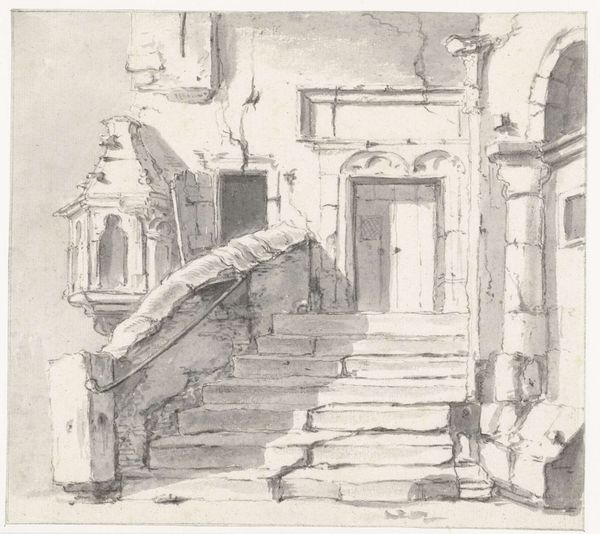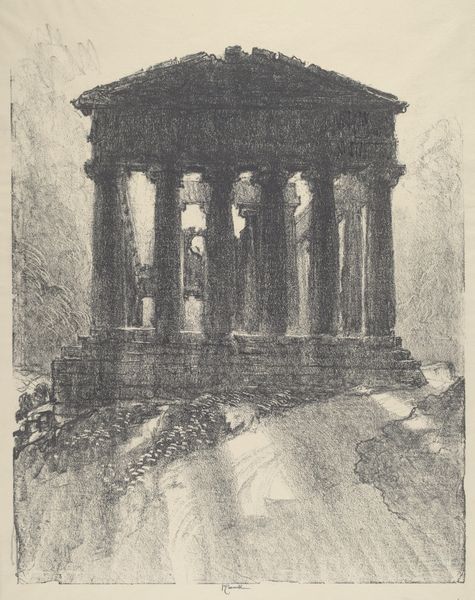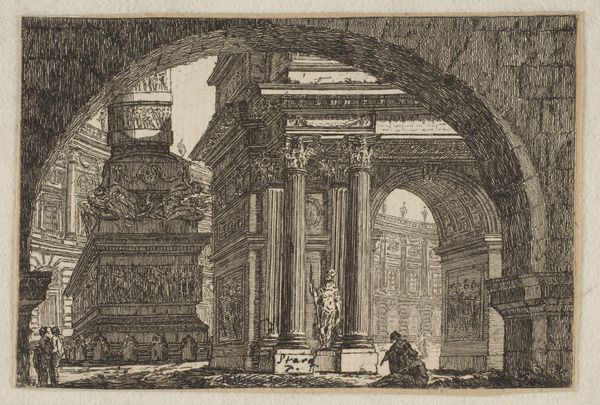
drawing, print, etching, paper, ink, chalk, graphite
#
drawing
#
baroque
# print
#
etching
#
landscape
#
classical-realism
#
etching
#
paper
#
ink
#
chalk
#
graphite
#
cityscape
#
history-painting
Dimensions: 215 × 258 mm
Copyright: Public Domain
Editor: We're looking at Jacob van der Ulft's "Temple at Tivoli," created around 1615. It's a drawing rendered in ink, chalk, and graphite on paper. It evokes a sense of fading grandeur. The ruins are beautiful but undeniably decaying. What stands out to you in this piece? Curator: The appeal, and the power, lies in *how* van der Ulft represents those ruins. It isn't merely documentation, it's a statement. The seventeenth century witnessed a burgeoning interest in classical antiquity, spurred both by archaeological discoveries and the humanist movement. This drawing places the Temple, and by extension Rome, as an object of scholarly study, but also… nostalgia. Does the medium itself, the delicate etching, affect how you perceive the decay? Editor: Definitely. There's a fragility that echoes the ruin itself. It’s like capturing a moment in time that's already slipping away. So, it's more than just a depiction of a temple; it's also a commentary on history and the passage of time. Curator: Exactly. Consider the social and political context. The Dutch Republic, van der Ulft's home, was defining itself as a new power, often drawing parallels to classical republics. Representing Rome in ruins perhaps served as a cautionary tale, or even a claim to a new, more virtuous republic. Do you see any idealized elements alongside the ruin? Editor: Perhaps in the careful rendering of the architectural details that remain? Despite the decay, there's a clear appreciation for the temple's original design. It’s romanticized. Curator: Precisely. And this tension - between decay and idealization, between historical record and political statement - makes this seemingly simple drawing so compelling. It encapsulates the complex relationship the 17th century had with its classical past. Editor: I see it now! I came in thinking of it as simply a pretty picture, but now it’s clear how loaded it is with cultural and political meaning. It is amazing how the artist transformed it with paper and ink. Curator: Indeed! It showcases how a ruin is never *just* a ruin. It's a loaded symbol deployed in different ways across history. It truly is powerful when we can think through this lense.
Comments
No comments
Be the first to comment and join the conversation on the ultimate creative platform.
